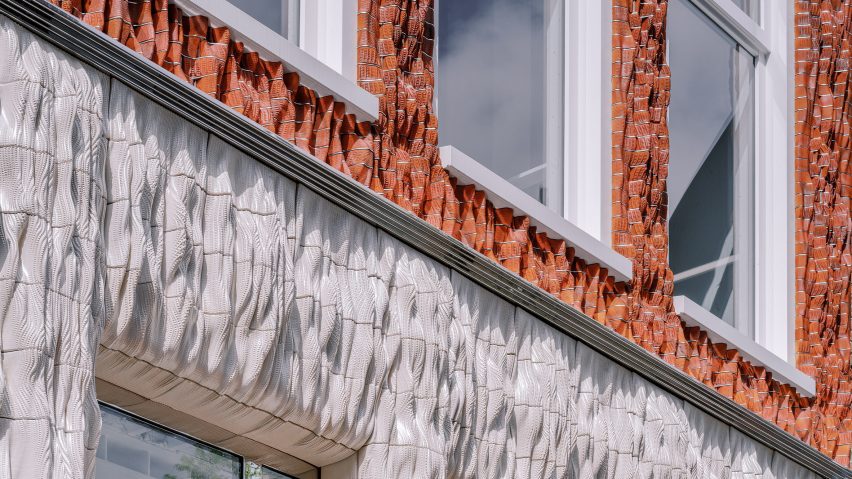
Studio RAP uses 3D-printed tiles to create facade informed by knitwear
Dutch architecture practice Studio RAP has designed a "wave-like" facade from ceramic tiles for a boutique store in Amsterdam using 3D-printing and algorithmic design.
Located on the P.C. Hooftstraat shopping street, Studio RAP designed the facade to stand out within its historic surroundings by digitally reinterpreting the silhouette of the original frontage.
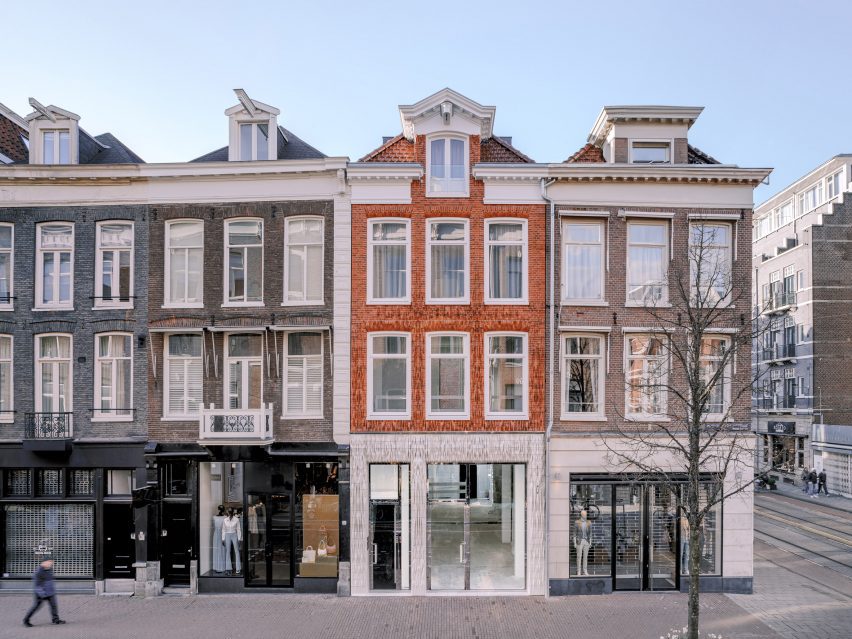
The material strategy was informed by the extensive ceramics collection at the nearby Rijksmuseum art gallery and the legacy of glazed ceramic art and architecture in Amsterdam.
"The idea arose to design a facade that was completely clad with 3D-printed ceramic tiles in such a way [that] it amplifies the identity of a high-end fashion store," Studio RAP co-founder Lucas ter Hall told Dezeen.
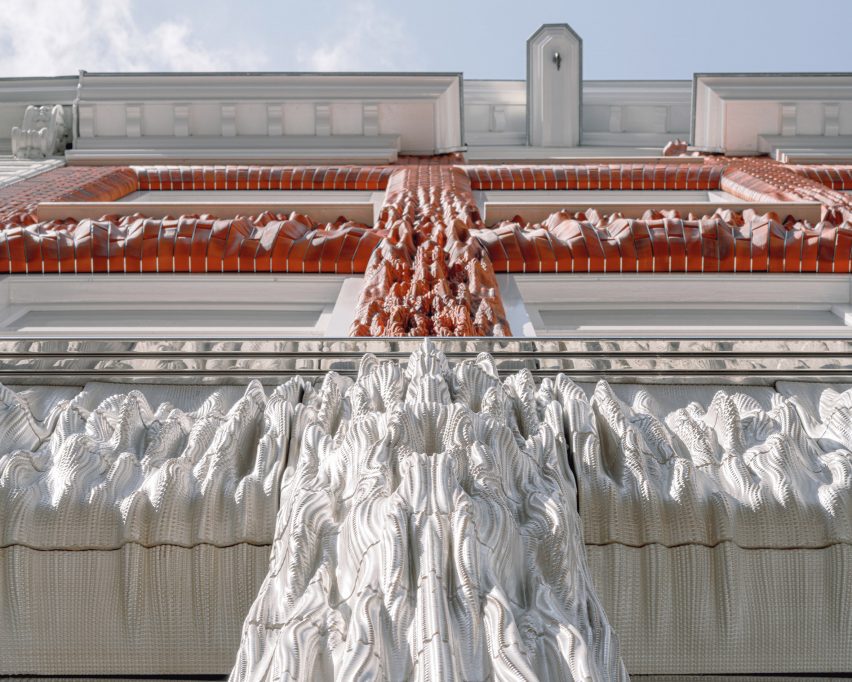
Each ceramic tile was designed and individually 3D-printed to echo the details and textures of textile.
"We took inspiration from the art of knitwear, integrating its intricate layers, like the elegance of its creases, the interloping yarn and the stitch pattern, and translated that into the final facade design," Ter Hall said of the project, which was designed for real estate company Warenar.
"The result is a unique architectural expression that seamlessly merges the historical significance of ceramics with the visual appeal of knitwear-inspired details," he added.
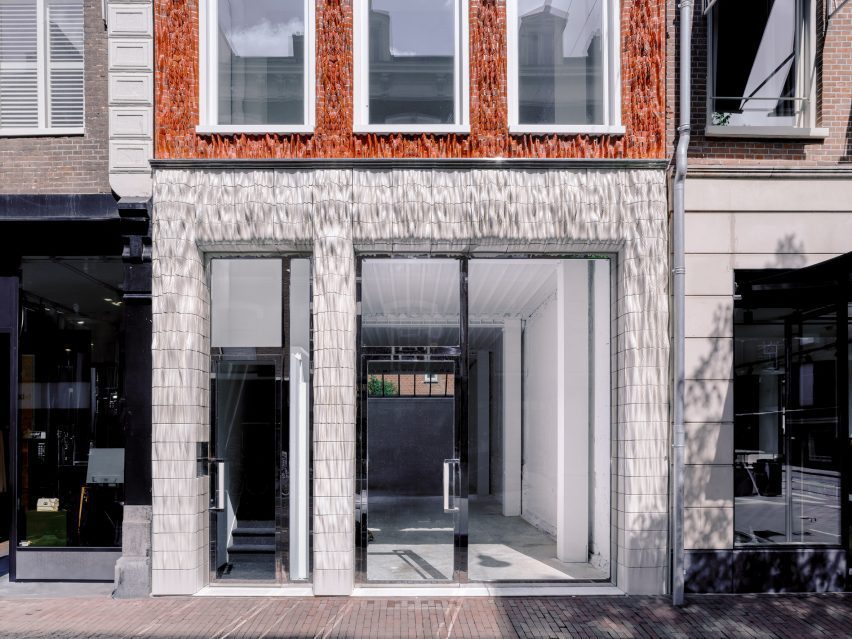
The facade was broken into a tripartite structure to continue the characteristic visual order of the street and resonate with the scale of the building's neighbours.
"We put extra attention to the connection of flushes between the new facade and the facade of the neighbouring building on the right," Ter Hall said. "By 3D-scanning the original and neighbouring facade the new flushes were accurately aligned."
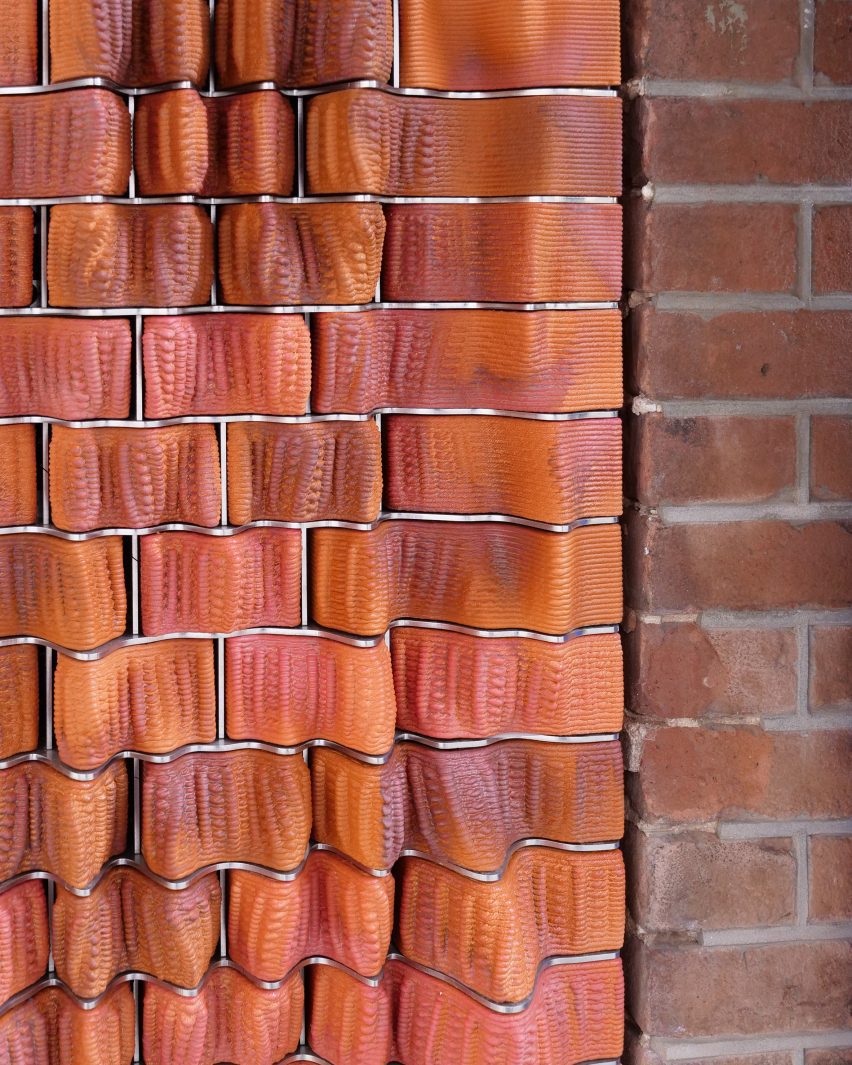
At ground level, the tiles were glazed in a pearlescent white with hints of yellow by pottery company Royal Tichelaar, while the upper levels were composed of 3D-printed "bricks" glazed in three shades of red and held in place by laser-cut steel cassettes.
"We collaborate with Royal Tichelaar, one of the Netherlands' oldest companies, for glazing, [which adds] an intriguing dynamic to our work by blending modern technology with traditional expertise," Ter Hall explained.
The tiles were configured to create a rippling rhythm that changes a viewer's experience of the facade depending on the approach.
"The closer you get, the more details start to unfold," Ter Hall explained. "From a far distance the facade blends with the legacy of the street, [but] closer you see the pearl stitch pattern occurring and you recognise that every square millimetre was designed."
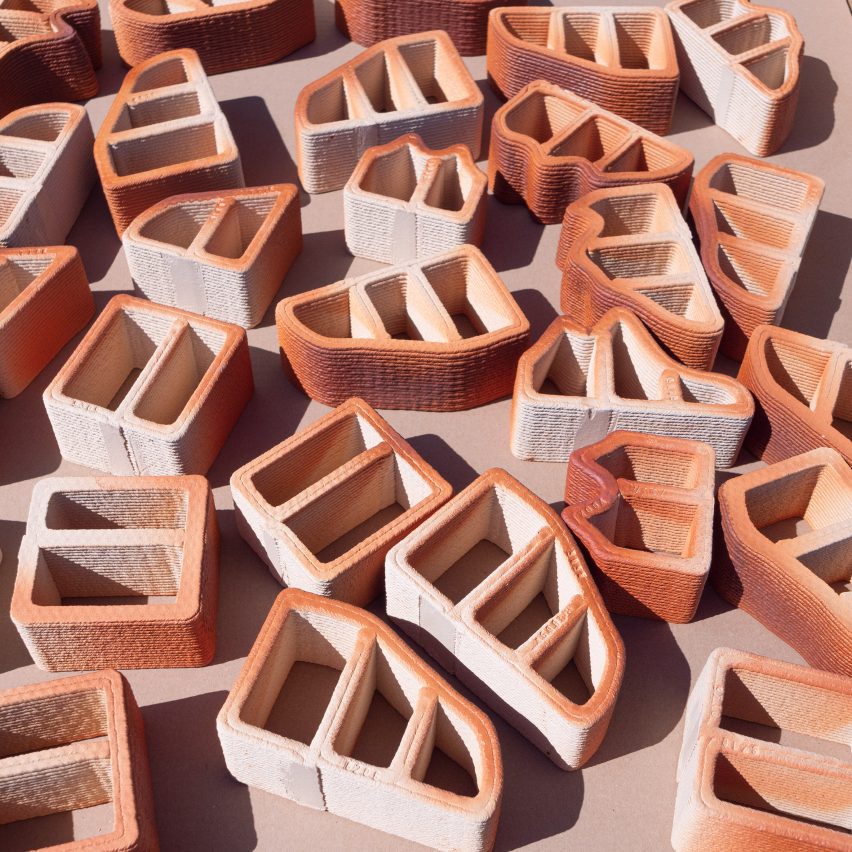
"We always aspire to design a certain layeredness and timelessness," Ter Hall continued. "Every time you pass by there's something new to discover."
To Studio RAP, the project embodies its mission to redefine the role of the architect and continue developing large-scale in-house manufacturing and advanced robotic processes.
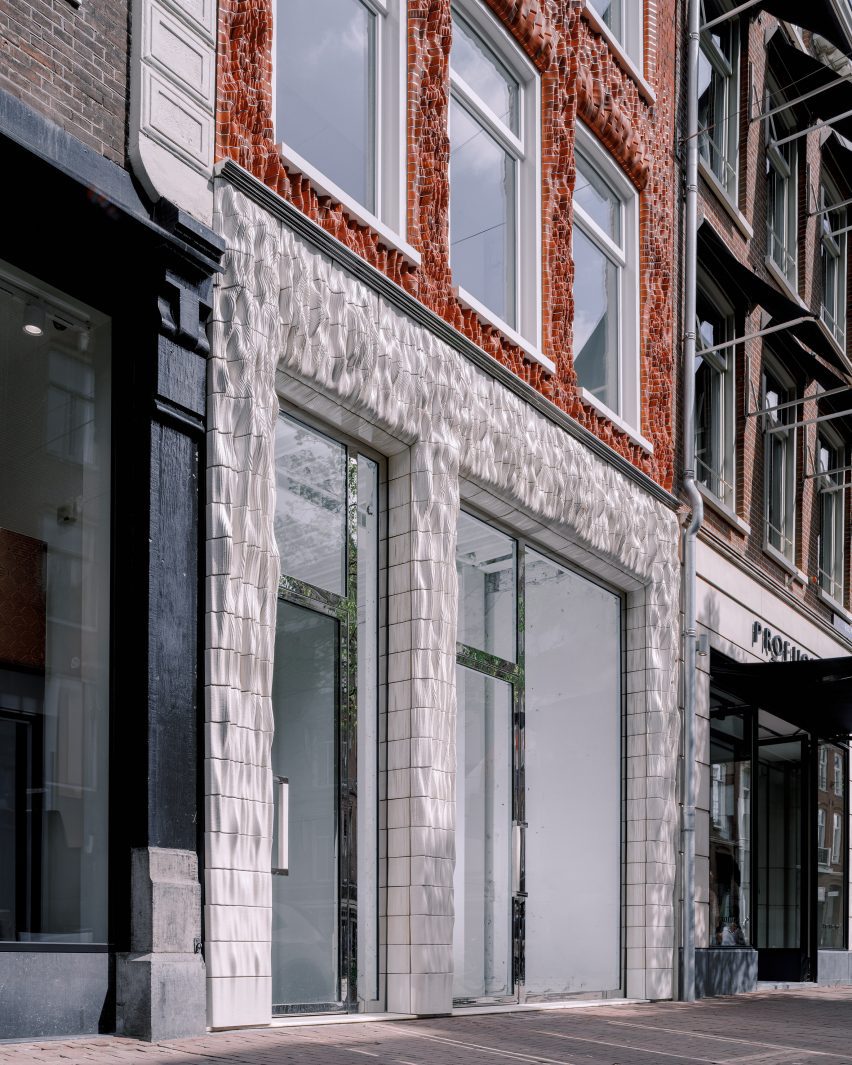
"This project challenges conventions, embodying a fresh architectural style that reflects our commitment to inject greater excitement and diversity into the world through innovative design," Ter Hall said.
Based in Rotterdam, Studio RAP explores architecture with a focus on computational design and digital fabrication. It has previously completed an archway of 3,000 unique 3D-printed ceramics tiles and a robotically fabricated building in the Netherlands.
The photography is by Riccardo De Vecchi and Studio RAP.